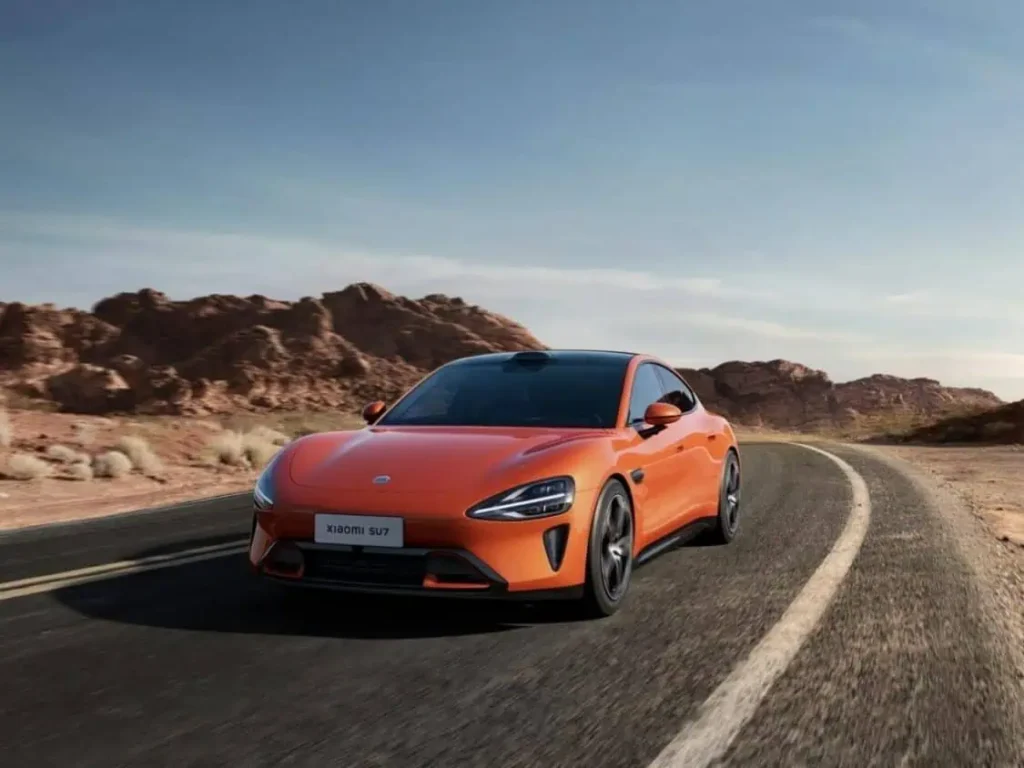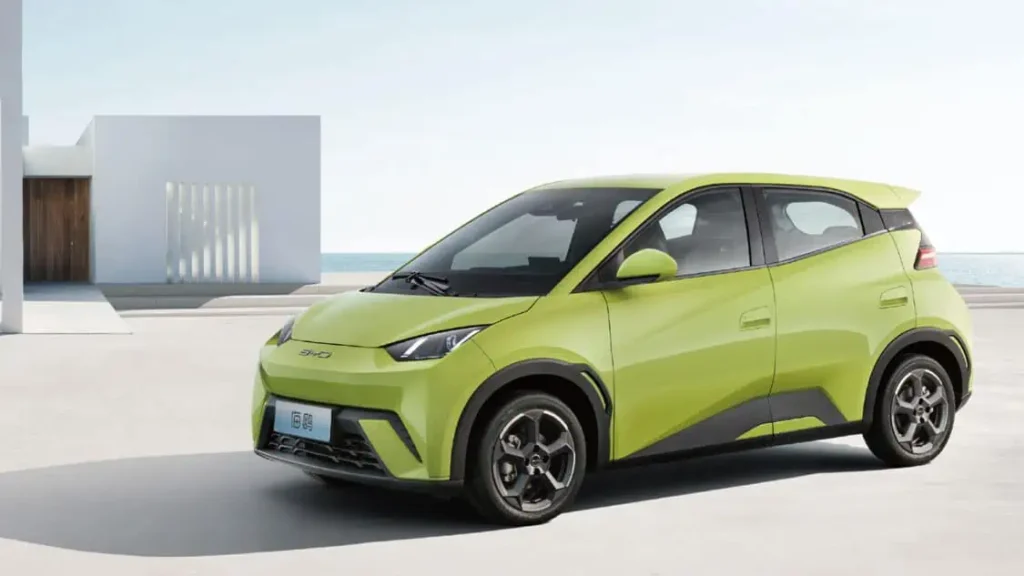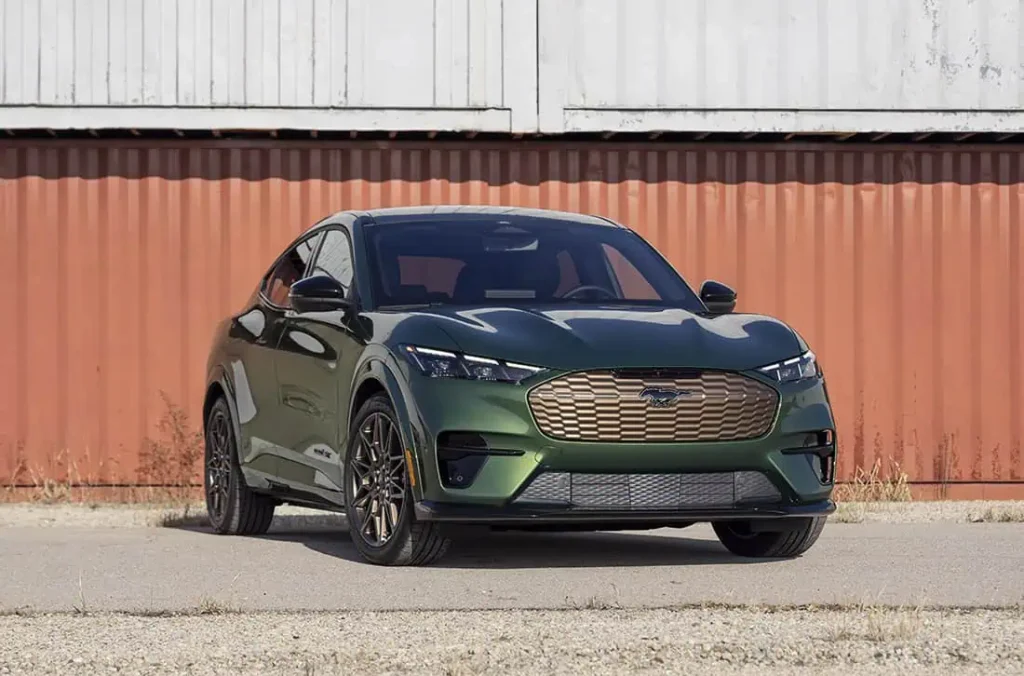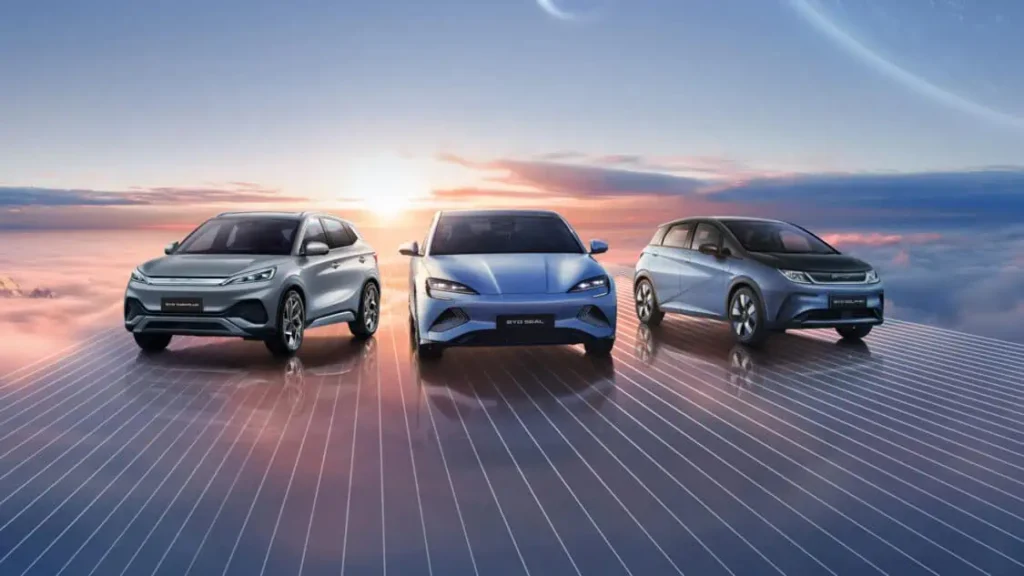Ford CEO Says Chinese EVs are an ‘Existential Threat’
Ford CEO Jim Farley’s recent visit in May to China has spotlighted a growing concern for the global automotive industry, particularly for legacy automakers like Ford. During his trip, Farley observed how Chinese electric vehicle (EV) manufacturers are rapidly advancing and posing a serious challenge to competitors, including Tesla, which has long been seen as the benchmark for EV innovation. Farley was particularly struck by the speed at which Chinese automakers are evolving, leveraging advanced technologies like artificial intelligence (AI) in their vehicles, and using their low-cost supply chains to dominate the market with competitively priced, tech-savvy models.
In an urgent call with John Thornton, a Ford board member with deep experience in China, Farley expressed his concerns, calling the rise of Chinese EV makers an “existential threat” to the U.S. auto industry. This anxiety stems from the fact that these companies are not only outpacing competitors in technological integration but also expanding aggressively into overseas markets, threatening the market share of traditional automakers.
Chinese EV makers, once considered smaller players in the global market, have emerged as formidable competitors, with their innovative digital features and cost advantages making them particularly appealing to consumers.

BYD and Others Reshape Competitive Landscape
Chinese automakers like BYD and others have dramatically reshaped the competitive landscape in the electric vehicle (EV) market, both domestically and internationally. In China, once-dominant foreign automakers have seen their market share eroded by homegrown EV makers, thanks to a combination of lower prices, technologically advanced interiors, and the ability to rapidly iterate and release new vehicle models.
BYD, backed by Warren Buffett, is a prime example of a Chinese automaker that has leveraged these advantages to gain significant ground. As a result, Chinese automakers are now expanding their influence beyond China, quickly penetrating markets in Europe, the Middle East, and Asia.
In contrast, the U.S. market is experiencing a slowdown in EV sales growth, as high prices and issues with charging infrastructure deter some potential buyers. However, U.S. automakers like Ford are keenly aware that the future lies in electrification, and they are scrambling to keep up with the fast-moving competition from China.
Jim Farley, Ford’s CEO, took immediate action after his eye-opening trip to China, arranging for Chinese EV models to be shipped to Michigan so that Ford’s executives and board members could experience these vehicles firsthand. These models, displayed in a Ford conference center near the company’s headquarters, included impressive innovations.
One notable vehicle was Xiaomi’s first EV, a smartphone giant turned automaker, which sells for between $30,000 and $40,000, a price point that undercuts Ford’s own Mustang Mach-E SUV. The Xiaomi EV drew attention with its Porsche-like design and high-tech features, including a fragrance diffuser and an infotainment system capable of syncing with home devices to control functions like lighting or air conditioning when the car approaches.
“Executing to a Chinese standard is going to be the most important priority,” Farley said.

Chinese automakers have faced significant barriers in entering the U.S. market, including steep tariffs, geopolitical tensions, and complex regulatory requirements. Despite this, they have made inroads in neighboring Mexico, where vehicles built in China, both electric and combustion-engine models, now account for about 20% of sales. This presence in Mexico suggests that Chinese automakers are gradually building a foothold in North America, even though they have yet to fully penetrate the U.S. market.
Governments worldwide are increasingly concerned about China’s rapid EV expansion. Their worries stem from the potential economic and security implications, including job losses in domestic industries and data-security risks associated with the advanced technology in these vehicles. In response, the European Union, where Chinese-made EVs already make up about one-fifth of electric vehicle sales, has disclosed plans to implement tariffs that could reach nearly 50%. The Biden administration has gone even further, proposing a roughly 100% tariff on Chinese EV imports to protect U.S. automakers.
Farley views Chinese EV makers as an immediate competitive threat in Europe and other global markets, where they are quickly gaining ground. Despite protectionist measures, Farley also sees these companies as a long-term risk to Ford’s core market in North America. He frequently reminds his executive team of historical precedents, noting how Japanese automakers like Toyota captured significant U.S. market share in the 1980s and 1990s, followed more recently by South Korean brands Hyundai and Kia, which have also excelled in the EV space.
Farley’s concern underscores the broader anxiety felt by traditional automakers as they face competition not only from Tesla but also from a rapidly advancing wave of Chinese automakers who are reshaping the global EV market.

Farley’s Trips to China Cause Ford Strategy Changes
Jim Farley’s recent trips to China have profoundly influenced his approach to Ford’s electric vehicle (EV) strategy. Witnessing the rapid innovation of Chinese automakers, particularly BYD, left a lasting impact on the Ford CEO. During a visit last year, he observed Chinese engineers dismantling a BYD EV, revealing a highly efficient, low-cost design that contrasted sharply with the more expensive engineering typically seen in the U.S.
Farley was also impressed by the ride quality and high-tech features of another China-branded EV, which convinced him that competing directly with Chinese automakers in the consumer market would be a losing battle.
As a result, Farley has pivoted Ford’s strategy in China, narrowing the company’s focus to commercial vehicles, where competition from local automakers is less intense. Simultaneously, he is racing to counter the growing threat posed by Chinese EV manufacturers in other global markets. One key aspect of his strategy involves borrowing from the Chinese playbook—Ford is now exploring partnerships with the same low-cost parts suppliers that have enabled Chinese companies to build affordable, high-tech EVs.
Another major shift is Ford’s decision to focus on smaller EVs. The high cost of the large batteries required for bigger vehicles, like pickups and SUVs, has made it difficult to keep these models affordable. This realization led to the recent cancellation of plans for an electric SUV the size of the Ford Explorer, marking a significant change in Ford’s EV lineup.
Instead, Farley has steered Ford toward developing a low-cost mechanical platform that will serve as the foundation for several future EV models. One of the first vehicles to emerge from this platform will be a midsize electric pickup truck, slated for release in 2027.

Chinese EV Market Takes America by Surprise
For decades, global automakers like Ford saw Chinese carmakers as secondary players in the industry. When China opened its auto market to foreign companies in the 1980s, it required them to form joint ventures (JVs) with local state-owned manufacturers. These Chinese partners primarily played supportive roles, helping foreign companies navigate regulatory complexities and providing capital to build factories. As a result, foreign automakers were able to dominate the Chinese market, while local manufacturers remained in the background.
However, China’s government had a long-term strategy in place to elevate its domestic auto industry through the development of electric vehicles (EVs). Beijing methodically invested in EV technology, offering generous subsidies to both manufacturers and consumers to stimulate the growth of the EV market. The government’s support included significant financial incentives for car companies to develop and produce EVs, and for consumers to purchase them. Additionally, China made massive investments in EV infrastructure, such as building out an extensive network of charging stations, which helped accelerate EV adoption.
This deliberate, government-backed push for electrification has allowed Chinese automakers to leapfrog many of their global competitors, positioning them as formidable players in the rapidly growing EV sector. As a result, the perception of Chinese automakers has dramatically shifted, and they are now seen as significant threats to the traditional dominance of foreign carmakers, particularly in the EV space.
By the early 2020s, Chinese automakers, once seen as struggling and inexperienced, had evolved rapidly, supported by a wave of domestic startups and government backing. Companies like BYD, in particular, emerged as leaders in the electric vehicle (EV) market. BYD’s sales exploded, with the company selling over three million electric and plug-in hybrid vehicles in 2022—nearly seven times its 2019 figure.
BYD’s success is partly due to its ability to produce stylish and affordable EVs, such as the Seagull, which starts at around $10,000. Despite its low price, the Seagull boasts a fashionable interior, a rotating tablet-like touchscreen, and a driving range of over 300 miles, making it highly competitive with EVs from legacy automakers that are priced three times higher. The Seagull is already available in China and Latin America, and BYD plans to introduce it to Europe in 2024 for around $20,000, further expanding its international reach.
In early 2023, Jim Farley, Ford’s CEO, made his first trip to China after the country lifted its pandemic restrictions. During his visit, he had the chance to test drive an electric SUV made by Changan Automobile, Ford’s longtime joint-venture partner. Changan, a company that had previously held a modest 5% market share in China, had made significant strides in EV technology.
Farley, a passionate car enthusiast with a deep understanding of vehicle design, pushed the Changan EV hard around a sprawling test track. Alongside Ford’s Chief Financial Officer John Lawler, Farley was left speechless by the car’s smooth ride, quiet performance, and upscale interior, all packed with user-friendly technology.
The experience underscored just how much progress Chinese automakers had made in a short time, further fueling Farley’s concerns about their growing competitive edge in the global EV market.
Lawler told Farley after the drive, “Jim, this is nothing like before. These guys are ahead of us.”
That test-track run in early 2023 convinced Farley and Lawler that Ford should give up on trying to reclaim status as a major player in China. Ford primarily is using China to export vehicles to other markets. Farley vowed to apply lessons from China elsewhere before the Chinese pull ahead again.
Ford May Lose $5B on EVs this Year
Ford’s transition to electric vehicles (EVs) has been hampered by quality issues and costly recalls, which have strained the company’s finances. Jim Farley, the CEO, acknowledged that these problems have been a significant challenge, but he noted that Ford has recently improved its vehicle quality by tying employee bonuses to quality metrics, incentivizing workers to prioritize reliability.
Despite the initial excitement surrounding the F-150 Lightning, Ford’s electric pickup truck, consumer interest in EVs has seen an EV sales growth slowdown, leading to increased pricing pressure and financial losses. The company is on track to lose approximately $5 billion on its EV operations this year, which could account for up to half of Ford’s projected operating profit. These losses have become a major focus for Farley, who views reducing the financial strain from EVs as his top priority.
Farley emphasized the urgency of addressing these losses, stating, “The sense of urgency is so high because the $5 billion loss is so visible.” The CEO is determined to turn around Ford’s EV business while continuing to compete in an increasingly crowded and competitive global market.
New Skunkworks Team
In June 2024, Ford announced it is establishing a new research-and-development (R&D) facility in Long Beach, California. The facility will focus on developing Ford’s “low-cost, flexible electric vehicle platform,” which is part of the company’s broader strategy to offer more affordable EVs while maintaining competitive technology. This R&D center will be located in Douglas Park, near Long Beach Airport.
The creation of this facility represents a major investment in the area and underscores Ford’s commitment to advancing electric vehicle innovation. The move is expected to generate significant benefits for the local community, including job creation, economic development, and a stronger emphasis on sustainable transportation. This facility is also a critical component of Ford’s efforts to compete with global EV manufacturers, particularly those from China, by developing cost-effective and versatile electric vehicles.
Farley remains optimistic that Ford can close the cost gap with Chinese EV makers, thanks to the company’s dedicated team working on new EV technologies, led by a former Tesla engineer. If successful, Farley believes that Ford’s deep expertise in trucks, off-road vehicles, and the commercial market will provide a competitive advantage as it adapts to the evolving EV landscape.
However, transitioning to smaller, more affordable EVs presents significant challenges for Ford, a company known for selling large, high-priced pickups and SUVs that often exceed $70,000. To offer EVs at a fraction of that price, Ford is forced to make tough decisions to keep costs under control.
During a visit to Ford’s design studio near its headquarters this past summer, Farley reviewed the progress of several future EV models. One prototype stood out for its innovative design, featuring a configurable rear seating area where the seats could swivel to create a meeting space, catering to family-centric markets like China. This type of creative, flexible design reflects Ford’s ambition to adapt its vehicle lineup to the demands of different global markets while keeping affordability in focus.

Farley Responds to EV Critics
Farley wrote a Linkedin article in June to respond to critics pointing to Ford’s $5B loss on EVs and other EV misinformation that is rampant in America.
The article is titled “Confessions from a lifelong Petrol Head. I love electric vehicles and it has nothing to do with politics.”
In the article, Farley addressed Ford’s $5B loss on EVs by saying: “It’s true that we are losing money on electric vehicles in the first innings of this transition, largely due to the upfront investment costs. But that too is changing. After all, what major technological leap forward wasn’t challenging and costly at the early stages?”
Farley described Ford’s EV commitment by saying: “We are in a global race to compete in a future where electric propulsion will undoubtedly be a giant force in transportation. America cannot cede innovation leadership to China, Europe, or any other region. Ford has survived and thrived for 121 years because we have never been shy about seizing the moment to innovate and face the future. Now, we are investing billions in plants, tech centers, and our workforce to create the must-have cars, SUVs, and trucks of tomorrow.”

Electric Vehicle Marketing Consultant, Writer and Editor. Publisher EVinfo.net.
Services